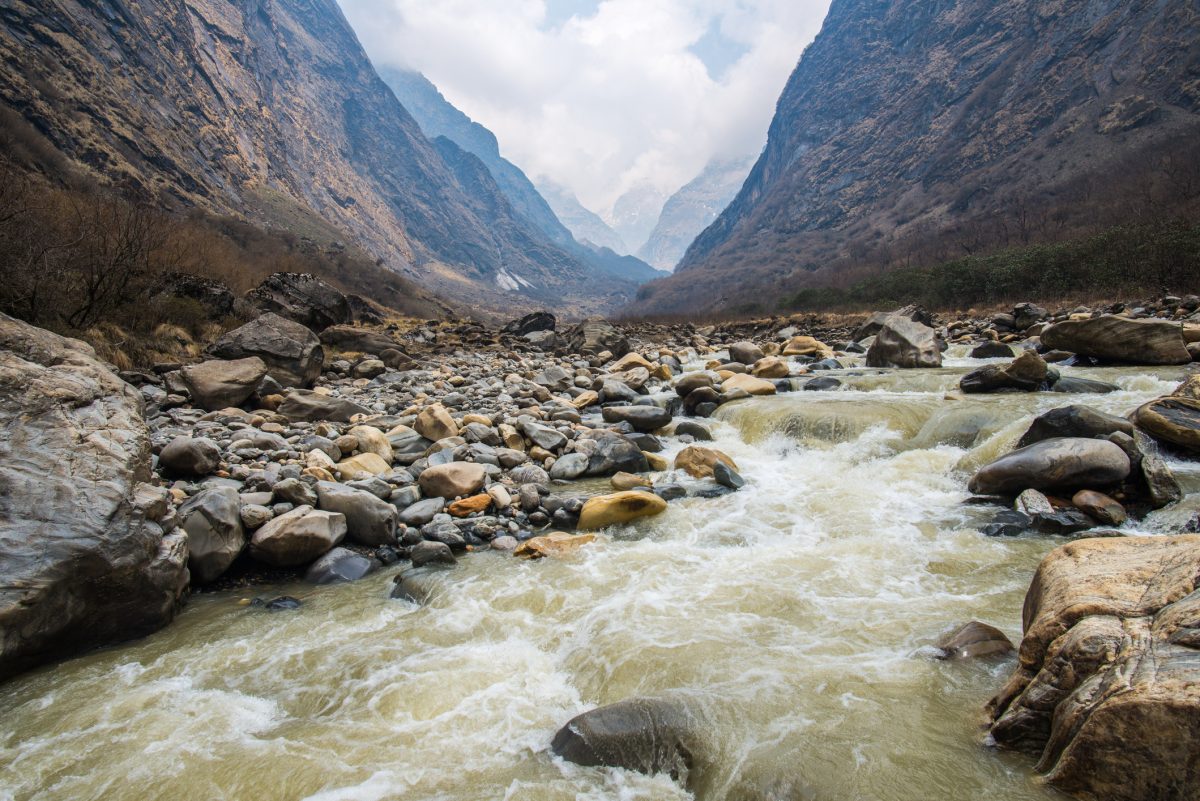Rivers running between different countries are a common concern as plastic pollution upstream adversely affects life downstream. Plastic pollution in rivers is a significant issue with far-reaching consequences, affecting not only freshwater ecosystems through the countries where rivers meander but also marine life where the river drains into the ocean.
Sunkoshi River Cleanup Campaign
To clean the Sunkoshi River in the Bagmati province of Nepal, 134 people participated in a river cleanup campaign organised by Project CAP (Collaborative Approach for Preventing Plastic Leakages in Rivers) in Golanjor Rural Municipality under the PLEASE (Plastic Free Rivers and Seas of South Asia) program.
River Sunkoshi’s Route and Impact
- Source and Path: The Sunkoshi River’s water source is located in the Zhangzangbo Glacier in Tibet. It merges with the Saptkoshi River, ultimately joining the Ganga River in Katihar district of Bihar in India, and finally draining into the Bay of Bengal in Bangladesh.
- Collaboration: Civil Society Creasion Nepal collaborated with Golanjor Rural Municipality, Youth Cohorts, the Armed Police Force, Nepal Police, Traffic Police, and other stakeholders.
- Outcome: The campaign removed 24,575 kg of waste from the Sunkoshi river banks and waste hotspots.
Future Cleanup Campaigns
According to Ujjwal Upadhay, team lead for Project CAP, at least 12 more river cleanup campaigns need to be conducted, one in each of the seven municipalities. The CAP project helped open the way to the new landfill site, and the waste was managed in the plastic waste hotspot using standard waste management mechanisms.
Importance of Individual Responsibility
Anand Mishra, founder of CREASION, emphasized the importance of individual responsibility in conserving natural resources. He stressed that people should not rely solely on external motivation or funding for crucial work like nature conservation. This commitment should come from within, ensuring a better future for Nepal.
Waste Problems and Urbanization
Shankar Baral, Chairperson of Golanjor Municipality, highlighted that rapid urbanization has led to waste problems in Golanjor Rural Municipality. Plastic bottles and waste are found everywhere, with people dumping waste near river banks. The banks of the river appeared blue and red with single-use plastic.
Youth Cohorts and Waste Management Practices
Members of the youth cohort emphasized that implementing effective waste management practices will reduce the amount of plastic entering rivers through proper disposal, recycling, and waste reduction strategies.
Measures to Combat Plastic Pollution
- Regulations: Enforcing regulations to limit the production, use, and disposal of single-use plastics.
- Biodegradable Alternatives: Promoting the adoption of biodegradable alternatives.
- Education: Educating communities about the impacts of plastic pollution.
- Behavioral Changes: Encouraging behavioral changes to reduce plastic consumption and stop littering.
India’s Ban on Single-Use Plastic
India has banned single-use plastic from 1st July 2022 under the Plastic Waste Management Amendment Rules, 2021.
Conclusion
By taking concerted action in every country to address plastic pollution in rivers, the health and integrity of our oceans can be protected for the safety of future generations.
Multiple Choice Questions (MCQs):
- What is the primary concern of rivers running between different countries?
- A) Deforestation
- B) Soil erosion
- C) Plastic pollution
- D) Overfishing
- Where is the source of the Sunkoshi River located?
- A) Nepal
- B) India
- C) Tibet
- D) Bangladesh
- Which organization organized the river cleanup campaign in the Sunkoshi River?
- A) Greenpeace
- B) Project CAP
- C) WWF
- D) UNESCO
- How much waste was removed from the Sunkoshi River during the cleanup campaign?
- A) 12,345 kg
- B) 15,678 kg
- C) 20,000 kg
- D) 24,575 kg
- Who emphasized the importance of individual responsibility in conserving natural resources?
- A) Ujjwal Upadhay
- B) Shankar Baral
- C) Anand Mishra
- D) A youth cohort member
- What major environmental regulation did India implement on 1st July 2022?
- A) Ban on deforestation
- B) Ban on single-use plastic
- C) Ban on industrial waste
- D) Ban on air pollution
